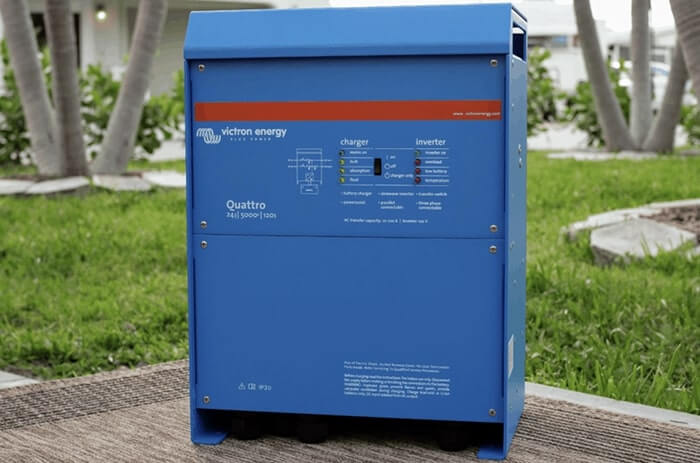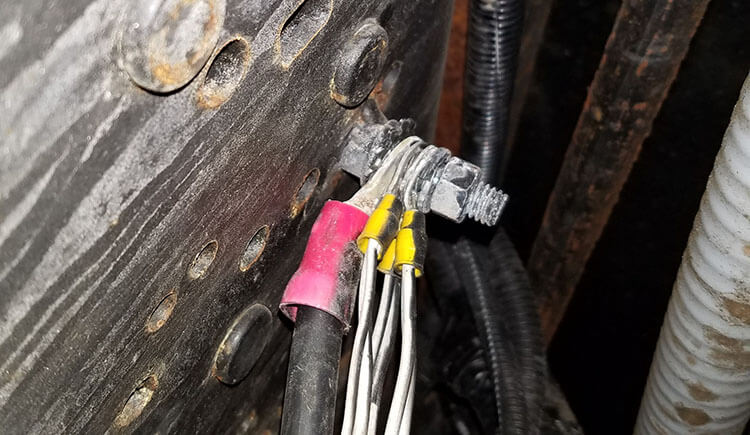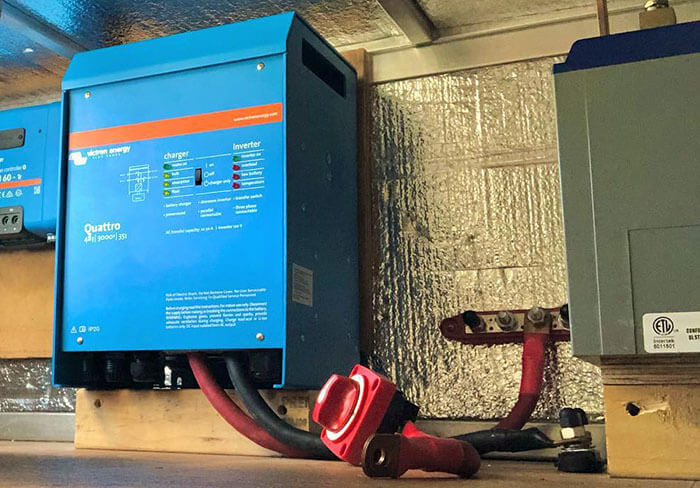An RV inverter is a great way to convert the 12-volt DC power from your RV battery into 110-volt AC power that you can use to run appliances, electronics, and other devices while camping. However, it’s important to properly ground an RV inverter to ensure safe operation. In this blog post, we’ll show you how to do it. Stay safe and enjoy your next camping trip!
Does An RV Need To Be Grounded?

Yes, an RV does need to be grounded. Grounding an RV helps to protect it from electrical surges and static electricity. It also helps to dissipate any static electricity that could build up on the RV. Grounding an RV is a simple process that can be done by anyone with a few basic tools.
How To Ground An RV Inverter?
There are a few different ways to ground an RV inverter. The most common way is to connect the ground wire from the inverter to the chassis of the RV. This provides a good electrical connection between the inverter and the RV.
Another way to ground an RV inverter is to connect the ground wire from the inverter to a ground rod that is driven into the ground. This provides a good electrical connection between the inverter and the ground.
Finally, it’s also possible to connect the ground wire from the inverter to both the chassis of the RV and the ground rod. This provides the best electrical connection between the inverter and both the RV and the ground.
It’s important to use proper grounding techniques when connecting the ground wire to the RV chassis or the ground rod. Improper grounding can cause electrical problems and could be dangerous.
Steps To Grounding An Inverter To An RV

1. Park your RV in a level spot and set the emergency brake.
2. First, you’ll need to find a good location for the inverter. It should be close to the RV battery and in a place where it will not be exposed to excessive moisture or heat.
3. Find a suitable location for the inverter near the RV’s battery. It’s important to have the inverter close to the battery so that you can easily connect the positive and negative leads from the inverter to the battery.
4. The inverter must also allow for easy access to monitor the DC input voltage and the AC output voltage.
5. Disconnect the negative (-) lead from the RV battery. This is usually a black lead, but it could be another color.
6. Connect the negative (-) lead from the inverter to the RV battery.
7. Connect the positive (+) lead from the inverter to the RV battery.
8. The wire gauge of the battery connection cables should be sized according to the rated current output of the inverter. The wire gauge size will be listed in the inverter’s user manual.
9. If you want to ground it with a rod then You’ll also need to install a ground rod at the inverter’s location. The ground rod should be driven into the ground to a depth of at least 8 feet.
10. Finally, you’ll need to connect the ground wire from the inverter to the ground rod. You can do this by clamping the ground wire to the ground rod with a grounding clamp.
11. Without rod grounding you’ll need to connect the ground wire from the inverter to the chassis of the RV. You can do this by drilling a hole in the RV and running the ground wire through it. Then, use a self-tapping screw to secure the ground wire to the RV chassis.
12. Once everything is connected, you should test the inverter to make sure it’s working properly. You can do this by plugging a 110-volt AC appliance into the inverter and turning it on. The appliance should work properly. If it doesn’t, then you’ll need to check the connections to make sure they’re tight and secure.
Following these steps will help you to ground your RV inverter properly. This will ensure the safe operation of the inverter and help to prevent any electrical problems.
Why RV inverter ground is important?

RV inverters are important because they allow you to use 110-volt AC power from your RV battery while camping. This can be used to run appliances, electronics, and other devices while camping.
However, it’s important to properly ground an RV inverter to ensure safe operation. grounding an RV inverter is important because it provides a good electrical connection between the inverter and the RV.
This helps to dissipate any static electricity that could build up on the inverter. Additionally, grounding the inverter to a ground rod helps to provide a good electrical connection between the inverter and the ground.
Frequently Asked Questions:
Can I use a 220-volt appliance with my RV inverter?
Most RV inverters are only designed to work with 110-volt appliances. However, some inverters are designed to work with both 110-volt and 220-volt appliances. If you’re not sure whether your inverter can handle a 220-volt appliance, you should check the user manual or contact the manufacturer.
What is the difference between an RV inverter and a car inverter?
The main difference between an RV inverter and a car inverter is the amount of power they can provide. RV inverters are typically much larger and more powerful than car inverters. Additionally, RV inverters are designed to be used for extended periods of time, while car inverters are typically only used for short periods of time.
Can I use my RV inverter to power my home?
You can use an RV inverter to power your home. However, you’ll need a much larger and more powerful inverter than what’s typically used in an RV. Additionally, you’ll need to make sure that your home’s electrical system can handle the amount of power that the inverter will provide.
Conclusion:
Grounding an RV inverter is important because it helps to ensure safe operation. It also helps to dissipate any static electricity that could build up on the inverter. Additionally, grounding the inverter to a ground rod helps to provide a good electrical connection between the inverter and the ground. Following these above steps will help you to ground your RV inverter properly.

Hi I’m Joiel Borid Creators of RV Outsider. Wild Life’s first camping was started when I’m 8 years old, at the Home Front Yard. Moto of RV Outsider shares my experience, expertise, and knowledge that I learned, and apprises about my next journey. So stay tuned with RV Outsider.

